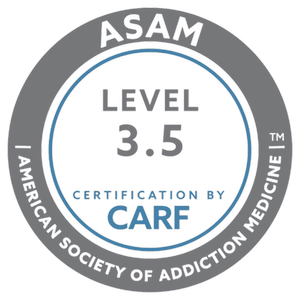Employee Addicted to Alcohol or Drugs? Signs & Next Steps
As many as 1 in 10 Americans in the workplace are secretly suffering from an alcohol or substance use disorder. Government surveys indicate that approximately 19.7 million Americans suffer from substance use disorders, and an estimated 8.5 million American adults suffer from co-occurring substance use disorder and mental illness.
The consequences of addiction on businesses are devastating, with the accumulated damage running into billions of dollars of losses per year. Not only does this affect productivity, but addiction in the workplace can also create environments that are nothing short of dangerous.
When employees are productive, hard-working, and motivated, working becomes a breeze. Targets are hit, and profits are made. Then suddenly, things start to unravel, and your team no longer feels the same.
Signs Your Employee is Addicted to Drugs or Alcohol
They are calling in sick frequently.
They are failing to meet deadlines.
The employee is making excessive trips to the bathroom.
They are providing low-quality work compared to previously.
They're more secretive and nervous.
They show poor hygiene or personal appearance. Is your employee coming to work unkempt, disheveled, and seemingly ignorant of their state? If that is the case, there might be more to it than just forgetting to do laundry or having plumbing issues.
They show degrading in personal appearance such as extreme changes in weight, marks or discoloration of the skin, dental issues, sunken eyes, flu-like symptoms, pain, intestinal distress.
Erratic behavior is often the last and most glaring sign of substance abuse that an employee will display. By the time they're insulting or yelling at their colleagues, outright lying, or engaging in any other kind of bizarre behavior, there is likely a series of traumatic events and changes to their brain's chemistry that have gotten them to that point.
Managers and employers can feel helpless watching a formerly happy and valued employee become a severe blockage towards getting things done. You begin to suspect that they may have a substance addiction but are not quite sure. What happens next is highly delicate, and there are right and wrong ways to approach it. First and foremost, we recommend:
Take a Short Quizz
If you’re concerned about someone you know may have struggling with addiction or alcohol abuse take this short quiz to determine if they need addiction treatment.
And remember, you’re not alone, we’re here to help.
How to Approach an Employee Struggling with Addiction
You must suspend judgment, display empathy, and ask open-ended questions. Although you suspect addiction, there could be many factors at play. One method gently draws the employees' attention to their absences, complaints, or failures to comply with best practices.
Ask them about these things gently, without accusing or attacking. Ask them what their perspective is on their performance. Suppose they feel comfortable discussing any personal issues they may be having at this time. Be careful not to point the finger and keep the ball firmly in their court to open up as much as they feel able.
Get Documenting
If drawing attention to their behavior hasn't worked, then the next step is to start meticulously documenting all incidents of disturbing behavior. Documentation protects the company from any counter-accusations of discrimination or failure to follow procedures. You can measure performance through punctuality, attendance, adherence to safety, and interactions with peers. Follow the established guidelines to the letter, give appropriate warnings, apply improvement plans and provide formal warnings in writing.
Have Appropriate Policy
Do employees have a copy of the expectations and guidelines the business has of them? Does it clearly state that possession or being under the influence of alcohol or illicit substances at the workplace carries significant consequences? If that isn't the case, then the employer must protect both itself and its employees. Having the appropriate policies will allow you to take appropriate action if substance use or alcoholism is proven.
It's Drug Addiction or Alcoholism - What Now?
If you are sure that your employee is using substances beyond a shadow of a doubt, then there are steps a company can take. In some cases, immediate dismissal may be the only recourse, but this should only be in the case of catastrophic performance deficiencies or violence in the workplace. Before making such rash decisions, offer support.
You can start by providing access to a list of resources like local AA/NA meetings and other similar groups.
There is also the option of offering a treatment solution like a rehabilitation program. Some may need intensive 24/7 residential treatment, while others would benefit more from evening outpatient therapy groups or individual sessions. No matter what service you think is needed, encourage the person to seek a professional to assess and individualize the care. Many treatment centers will work with insurance providers to help cover the costs associated with rehabilitation.
Research shows that employees experience an 82% success rate when referred to treatment by an employer. In addition, research demonstrates an increase in productivity and decrease in absenteeism and lateness once the employee has successfully graduated from a residential treatment program along with six months of sobriety post-treatment.
If you think your employee might be struggling with addiction and not sure what to do, get in touch for a consultation. Here at The Walker Center, we offer confidential assessments with a team of certified experts who will assess the situation and provide solutions. You can help someone find the help they need. Get in touch to learn more.
Get The Latest Updates In Drug & Alcohol Recovery News To Your Inbox
If you opt into our newsletter, we promise to respect your privacy. We don’t share your information with any other parties. Sign up to get info about the science behind addiction, the latest trends in addiction treatment, inspirational recovery stories, and much more.



